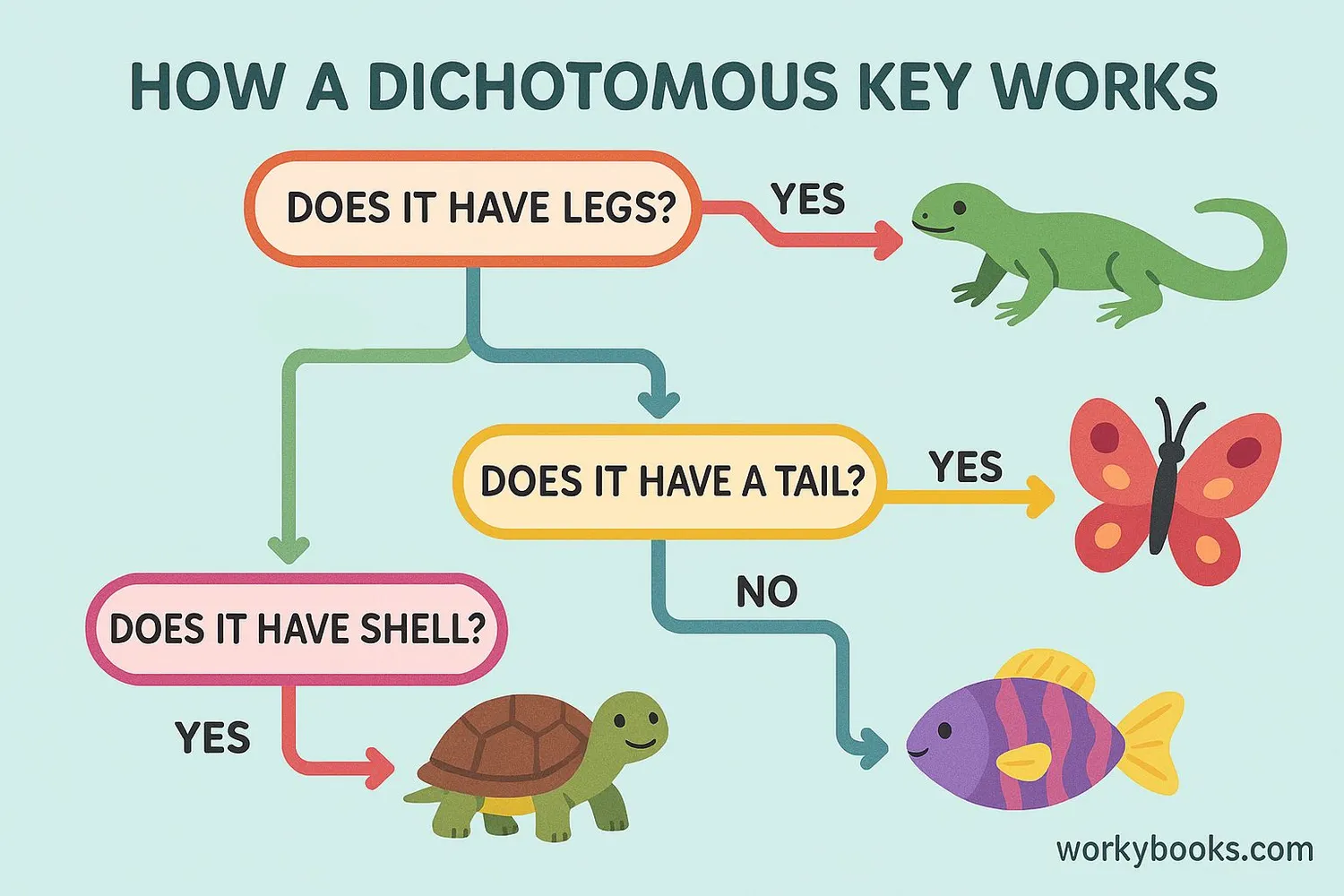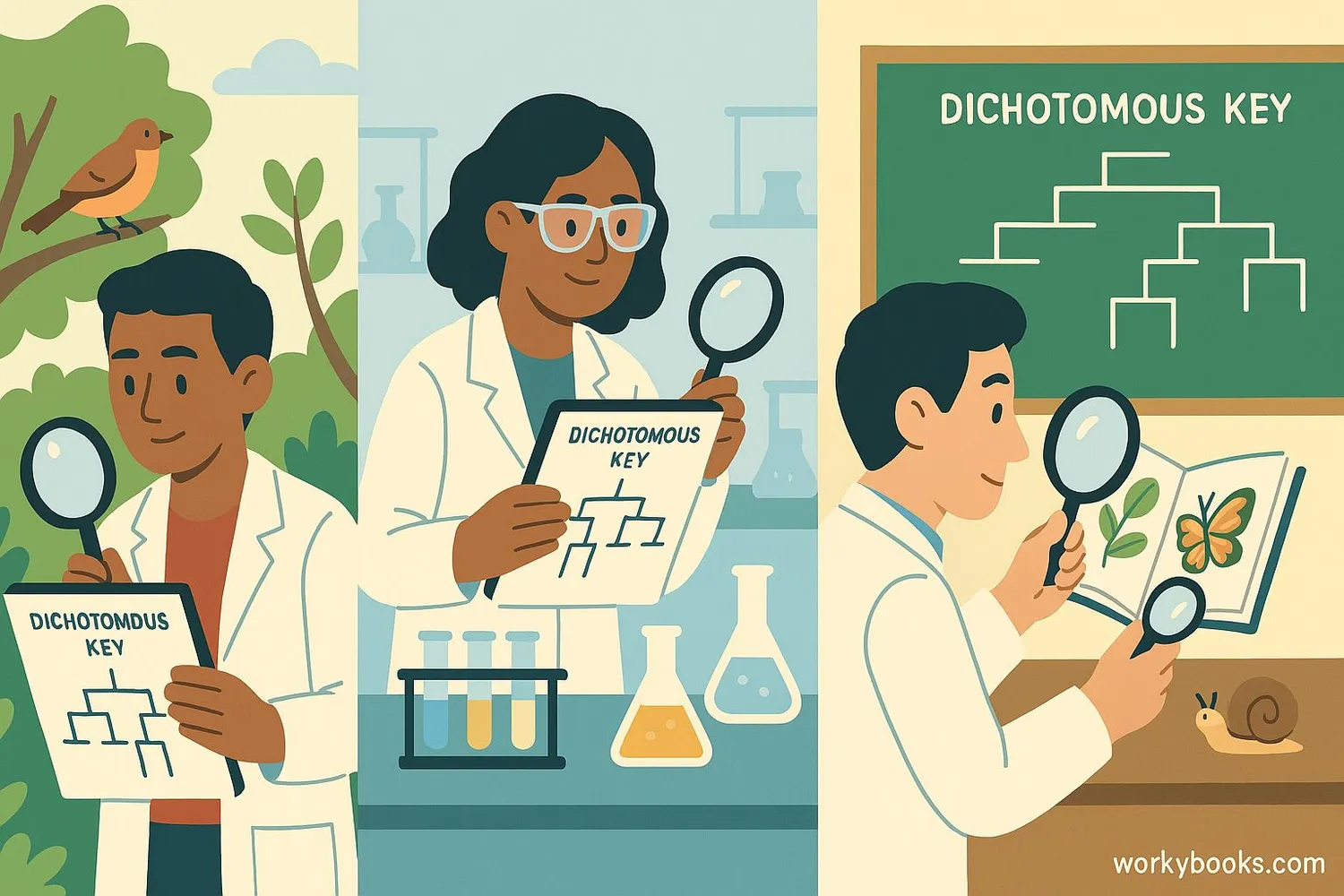Dichotomous Keys - Definition, Examples, Quiz, FAQ, Trivia
Discover how scientists identify and classify living things!
What is a Dichotomous Key?

A dichotomous key is a special tool scientists use to identify living things. It's like a detective game where you answer questions to figure out what something is! The word "dichotomous" means "divided into two parts," so each step gives you two choices to help identify an organism.
Think of it as a choose-your-own-adventure book for nature! You start with a question about the organism, choose the answer that matches, and follow the directions to the next question. After several steps, you'll discover the name of the plant, animal, or other living thing you're studying.
Science Fact!
Dichotomous keys help scientists identify over 8 million species of living things on Earth!
How Dichotomous Keys Work

Using a dichotomous key is like solving a mystery! You answer simple questions about the organism you're trying to identify. Each question has only two possible answers. Here's how it works:
Example: Identifying Leaves
1. Does the leaf have a simple shape (one piece) or is it compound (made of many leaflets)?
→ If simple, go to question 2
→ If compound, go to question 5
2. Is the leaf edge smooth or toothed (like a saw)?
→ If smooth, go to question 3
→ If toothed, go to question 4
3. Is the leaf shaped like a heart?
→ If yes, it's a Redbud leaf
→ If no, it's a Magnolia leaf
By answering these step-by-step questions, you can identify almost any living thing! Scientists create these keys for plants, animals, insects, fungi, and more.
Identification Tip!
Always start at the beginning of the key and follow the questions in order. Don't skip ahead!
Why Dichotomous Keys are Important

Dichotomous keys are essential tools in biology and environmental science. Here's why they matter:
Species Identification
Helps scientists accurately identify and name organisms in the field
Biological Classification
Organizes living things into groups based on shared characteristics
Learning Tool
Teaches students about biodiversity and scientific observation
Without dichotomous keys, scientists would have a much harder time:
• Identifying new species
• Studying ecosystems
• Tracking endangered species
• Understanding how organisms are related
Dichotomous keys help us make sense of the amazing variety of life on our planet!
Dichotomous Key Quiz
Test your knowledge about dichotomous keys with this quiz! Answer all 5 questions to see how much you've learned.
Frequently Asked Questions
Here are answers to some common questions about dichotomous keys:
Fun Dichotomous Key Facts
Discover some amazing facts about dichotomous keys and classification!
World Record Key
The largest dichotomous key ever created is for insects and contains over 1 million steps! It helps scientists identify any of the 1 million known insect species.
Marine Marvel
Scientists use underwater dichotomous keys to identify marine species during deep-sea explorations. Special keys help identify glowing organisms in the dark ocean depths!
Space Botany
NASA developed special dichotomous keys for astronauts to identify plants growing in space stations. These keys help monitor plant health in zero gravity!
Ancient Origins
The first known classification system was created by Aristotle over 2,300 years ago! He grouped animals by their habitats and physical characteristics.


